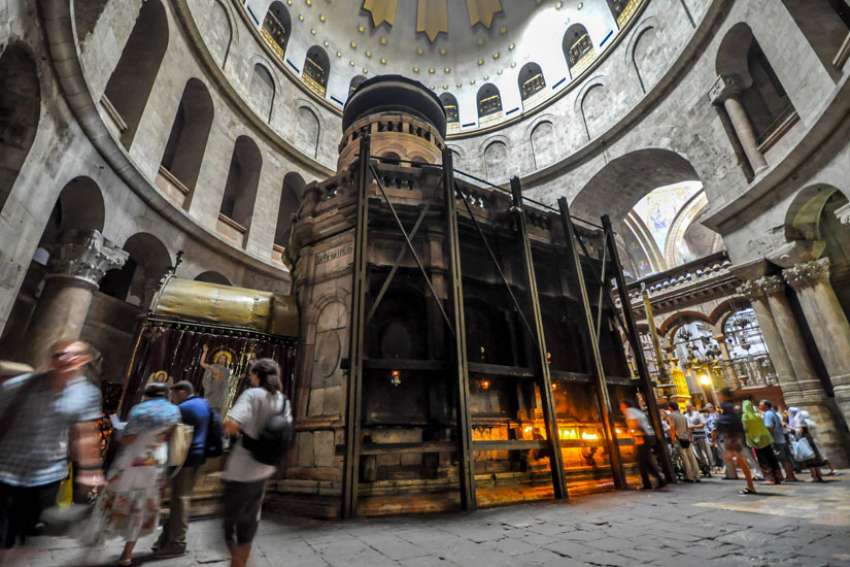The holiest shrine in Christianity, the Church of the Holy Sepulchre is widely believed to be the place where Christ’s tomb is located. It is occupied and operated primarily by Catholic, Greek Orthodox and Armenian clergy with some participation by the Orthodox Copts, Syrians and Ethiopians.
Claims and counterclaims on the church have been contentious over the centuries. A balance was codified by a Sultan’s decree of 1853, known as the status quo. Today that same law is enforced by Israeli authorities.
Co-operation between the churches to restore the crumbling structure of the Aedicule, an 1810 structure built around the tomb of Christ, marks a new spirit of practical, ecumenism.
In March the Latin Custody of the Holy Land, operated by the Franciscans, announced work would begin on the church after Orthodox Easter in April. While the site remains open to pilgrims, work will continue into 2017 with financial support from the Vatican, the Greek government and Jordan’s King Abdullah II.
The three Canadian churches have jointly established the Holy Sepulchre Restoration Fund 2016. Catholics can contribute by sending cheques to the fund at the Canadian Conference of Catholic Bishops, 2500 Don Reid Dr., Ottawa, Ont. K1H 2J2.
The Church of the Holy Sepulchre has been a pilgrimage site since the Emperor Constantine’s mother Helena oversaw its initial construction in 326. It was damaged by fire during a Persian invasion in 614. In 1009, the Fatimid Caliph, Al-Hakim bi-Amr Allah ordered its complete destruction. This event led to the expulsion and persecution of Jews in France, who had been blamed for the shrine’s destruction by a Cluniac Cistercian monk. Eventually, destruction of the Holy Sepulchre Church was motivation for the crusades. But before the crusades could get started, Al-Hakim’s son Ali az-Zahir gave permission for rebuilding the church. The rebuilding was finished in 1048 and the Crusaders arrived in 1099.
Under Crusader rule, the Church of the Holy Sepulchre was remodelled in Romanesque style. Saladin took back the church in 1187. Emperor Frederick II gained control of the church in the 13th century through a treaty. But the emperor had been excommunicated, so the pope forbade Christians from visiting it. The Sassanid Muslim empire took over in 1244.
Franciscans began their care of the Holy Sepulchre in 1555 but had to share the shrine with the Orthodox. It fell to the local administrators of the Ottoman Empire to try to keep the peace between the Christians. This resulted in the status quo.
The British mandate in Palestine inherited the situation and placed iron girders around parts of the neglected, crumbling church structure in 1947. The British passed responsibility on to the Israelis in 1948.
In 2010 Jerusalem’s city council threatened to cut off water to the church over unpaid water bills.

